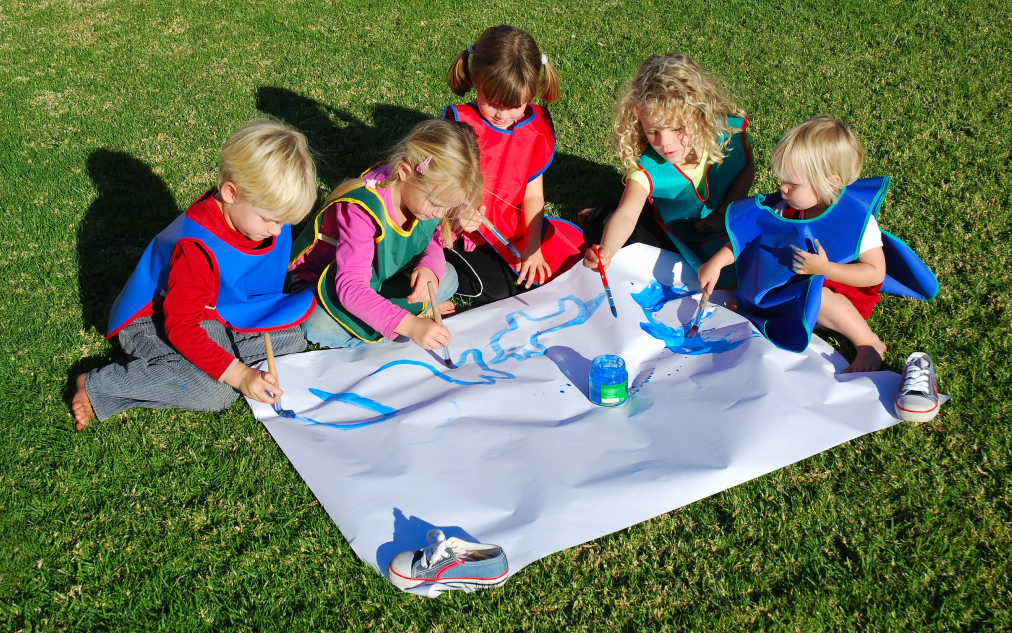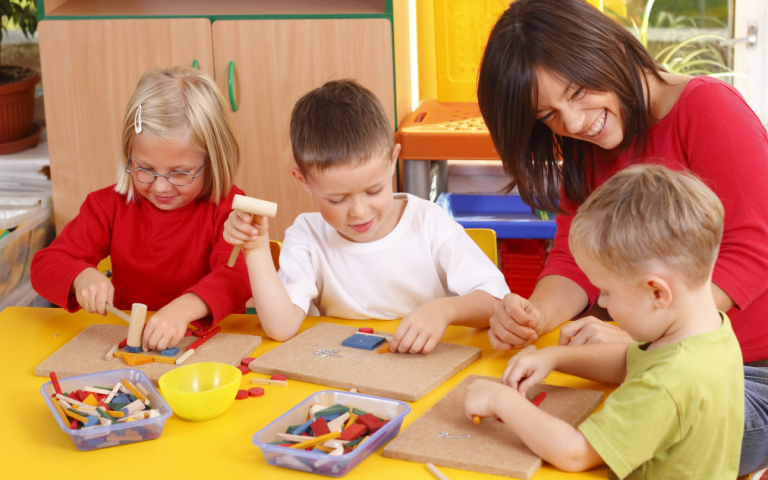Written by Alex Liau, learning & behaviour psychologist.
When children struggle emotionally, the place where they spend most of their time can either support their healing or make them feel more stressed. These places can be schools, community spaces, and surprisingly, their own home. Play therapy recognises that some children struggle even in familiar settings. By using play therapy in schools, treatment becomes more approachable and less overwhelming, creating a form of mental health care that feels safe, supportive, and seamlessly integrated into everyday life.
Hannah, a second-grade student, developed severe separation anxiety after her parents’ divorce. She and her mother had recently moved into a women’s shelter, a major change that deepened Hannah’s sense of insecurity. Each morning, she clung to her mother, refusing to enter the classroom. She often complained of stomachaches, and her teachers noticed she withdrew from group activities. When the school counsellor introduced play therapy, Hannah finally found a safe outlet to express what she couldn’t put into words.
Ethan is a nine-year-old student who often freezes during tests. Despite being a capable and diligent student, Ethan experiences significant anxiety during tests. His teachers noticed that he sometimes puts his head down on the desk, refusing to write. When Ethan began school-based play therapy, he chose to work with puppets. In one activity, he acted out a classroom test with puppets. One puppet whispered, “I’ll fail again,” while another said, “You’re ready, you studied hard.”
This exercise allowed Ethan to externalise the negative self-talk that paralysed him during exams. Guided by his therapist, Ethan created a Brave Backpack to overcome his anxiety. Using craft supplies, he decorated a paper bag with drawings that made him feel courageous. These included stars, shields, and even a superhero. Inside, he placed small cards with “helpful thoughts,” like “I’ve practised, and I can try my best.” The backpack became a tangible reminder of his inner resources, something he could “carry” into future challenges.
Bringing Play Into Hannah’s Schooling Day
Play therapy in schools normalises emotional support by embedding it into a child’s routine. For Hannah, sessions took place in a small, quiet room right next to her classroom. Having the therapy close to her classroom keeps her from feeling overwhelmed.
In one session, Hannah used a puppet to act out her fear of being left alone. The puppet cried and begged its “parent” not to go. Watching this, her therapist gently guided the story, helping Hannah imagine what the puppet might do to feel safe while apart, perhaps carrying a picture of the parent or creating a goodbye ritual. Together, they wrote a short story about the puppet learning to manage the day with bravery.
This approach made coping strategies feel tangible and relevant. Because therapy was part of Hannah’s school life, she could immediately practice her new skills in the classroom.
Play Therapy Strategies That Work for Ethan
Ethan’s therapist used Cognitive Behavioural Therapy to help him identify unhelpful thought patterns. He would often say to himself, “If I make a mistake, I’ll fail everything.” Through guided play, Ethan practised replacing these unhelpful thoughts and scripts with more balanced ones.
One game involved drawing “worry thoughts” on slips of paper, then tossing them into a basket labelled Not True. Next, Ethan wrote “helper thoughts” on bright cards and placed them in his Brave Backpack. This activity turned abstract concepts into something visible and manageable. By practising these steps repeatedly, Ethan learned to challenge his anxious thinking in playful but effective ways. These playful yet structured activities provided Ethan with concrete ways to manage big emotions in real-time.
Partnering With Teachers for Lasting Impact
Therapists in school settings work closely with teachers and administrators to carry therapeutic lessons into everyday classroom life. Hannah’s therapist suggested creating a calm corner in the classroom. Stocked with soft cushions, sensory toys, and a few calming picture books, this space gave Hannah and her classmates a safe place to manage overwhelming feelings. Her teacher learned to encourage Hannah to use the corner when she seemed anxious, reinforcing the strategies from therapy sessions.
This collaboration helped bridge the gap between therapy and education. Hannah felt supported not just in her sessions but in the classroom itself, reducing the stigma often associated with mental health support. Other children also began to see the calm corner as a standard tool, fostering a more compassionate school culture. Children spend much of their time in school. It is a place where they learn, make friends, face challenges, and sometimes struggle silently with emotions which may be too big for them to handle.
Educators play a crucial role in implementing and sustaining therapeutic play therapy in schools. Ethan’s therapist collaborated with his teacher to ensure he had access to his coping tools during test days. A small box under his desk held his glitter jar and Brave Backpack cards. The teacher also learned to use simple prompts, such as, “Would you like to take two deep breaths before we start?” These small but meaningful accommodations made Ethan feel supported, reducing his anxiety and helping him engage more fully in class.
Extending Play Therapy Into Communities
The benefits of play therapy are not limited to schools. In community-based settings, such as family service centres, shelters, and transitional housing, play becomes a lifeline for children navigating instability.
At the community centre attached to the women’s shelter, Hannah joined group play therapy after school while her mother worked. During the sessions, she often spent time at the sand tray, repeatedly building houses from sand. These creations revealed her longing for stability and her fear of more change.
The therapist encouraged Hannah to talk about her “sand houses and the family members living in them.” She explained that one house was “safe,” while another was “broken.” With gentle guidance, Hannah began to process her sense of loss and uncertainty. Over time, she also took part in cooperative activities like painting murals and playing group games that reminded her she wasn’t alone.
Community-based play therapy also adapts to meet the cultural needs of the children. In Hannah’s case, her therapist included familiar Chinese folktales and songs about love and strength. They are the same ones Hannah enjoyed when her mother sang them at bedtime. These moments affirmed her identity and reassured her that every part of herself was welcome in the playroom. Respecting cultural traditions sends a message to the child that “your identity is valued, and healing can include the familiar activities from your community”.
Why Location Matters in Children’s Healing
The true strength of play therapy in schools and community settings lies in its accessibility. Children like Hannah don’t need to travel far or face the stigma sometimes attached to “going to therapy.” Instead, support reaches them in spaces where they already feel safe and understood.
For Hannah, this meant practising self-calming techniques in her classroom’s calm corner, engaging in sand tray play at the shelter, and sharing her experiences during group sessions. Over time, these activities became part of her daily routine, tools she could draw on at home, at school, and during therapy.
Hannah’s journey highlights how integrating play therapy into familiar environments transforms children’s mental health support. In schools, it reduces stigma and embeds coping strategies into everyday learning. In communities, it offers safe outlets for trauma, fosters social connection, and honours cultural identity. Above all, it reminds children like Hannah that they are not alone, and that healing can begin wherever they feel most at home.
The Importance of Involving Family
Holistic care extends beyond the classroom. Ethan’s therapist invited his parents to join occasional sessions. Together, they played a structured storytelling game where each family member shared a “morning victory” and one challenge from the week. This activity highlighted strengths and normalised struggles.
Ethan’s mother proudly shared that her morning victory was “getting everyone to school on time,” while Ethan admitted, “I remembered to pack my Brave Backpack.” The therapist used these moments to model supportive responses and showed parents how to validate emotions and encourage effective coping strategies.
The Power of Collaboration in Play Therapy
Play therapy is most effective when everyone in a child’s world participates in the healing process. Teachers, counsellors, and parents each play a vital role in reinforcing what happens in the therapy room. When adults understand and apply the strategies children learn, such as using calm corners, storytelling, or art-based reflection, the benefits of therapy extend far beyond the session itself.
Each technique, whether a game, a sand tray activity, or a simple breathing exercise, helps address a specific emotional need. And because every child’s story is unique, the methods must be tailored to their experiences and development. When schools, families, and communities work together, play therapy becomes more than an intervention – it becomes a shared language of care, safety, and connection.
If you’re passionate about helping children build resilience and emotional well-being, explore Alison’s free Diploma in Play Therapy. This comprehensive course introduces the theory and practice of play therapy, offering educators, mental health professionals, and emerging therapists the skills to support children through play, one of the most natural and effective paths to healing.









